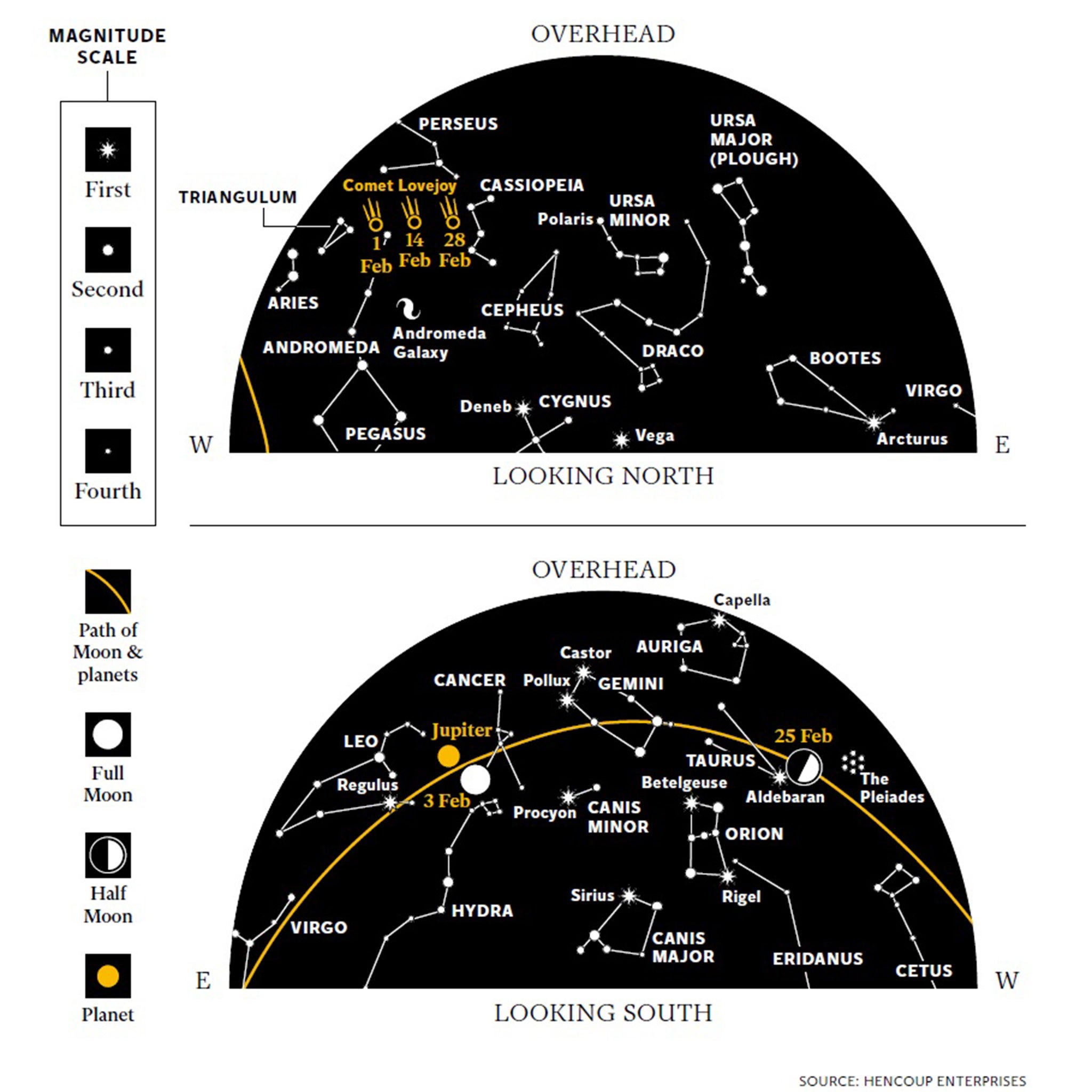Stargazing in February: Venus and Mars are all set for a celestial canoodle
You’ll spot Venus all month long, loitering in the western sky after sunset

Your support helps us to tell the story
From reproductive rights to climate change to Big Tech, The Independent is on the ground when the story is developing. Whether it's investigating the financials of Elon Musk's pro-Trump PAC or producing our latest documentary, 'The A Word', which shines a light on the American women fighting for reproductive rights, we know how important it is to parse out the facts from the messaging.
At such a critical moment in US history, we need reporters on the ground. Your donation allows us to keep sending journalists to speak to both sides of the story.
The Independent is trusted by Americans across the entire political spectrum. And unlike many other quality news outlets, we choose not to lock Americans out of our reporting and analysis with paywalls. We believe quality journalism should be available to everyone, paid for by those who can afford it.
Your support makes all the difference.February is the month for couples to share a close moment – and Venus and Mars are no exception. They’re heading for a celestial canoodle just a week after Valentine’s Day. Venus is certainly no shy lass. You’ll spot her all month long, loitering in the western sky after sunset and outshining everything else in the night sky (except for the matchless Moon). Astronomers have found that she is truly hot stuff – and that she’s very adept at hiding her true nature.
A twin in size to our planet Earth, the “Planet of Love” orbits just a bit closer to the Sun. Space probes have discovered that Venus is shrouded in thick clouds – made of corrosive sulphuric acid – that veil her surface from view. But we’re certainly not talking about concealing any modest charms.
Astronomers have explored the terrain beneath by beaming radio waves down and analysing the echoes, like airport radar showing up planes through the fog. They’ve found that Venus’s surface is disfigured with huge boils – giant erupting volcanoes.
Her “air” is made of choking carbon dioxide, at a pressure 90 times higher than atmosphere pressure on Earth. This thick blanket traps the Sun’s heat, so that her surface swelters at a torrid 460C, hotter than the highest setting of your kitchen oven. If you were impertinent enough to try to get to know Venus intimately, you’d be simultaneously corroded, suffocated, crushed and roasted!
That’s not stopping Mars from making an approach to her in our skies this month, though in reality the planets are not in close proximity, just lying in the same direction. Mars is currently one-and-a-half times further away.
The two worlds are closest on the evenings of 21 and 22 February. You can see immediately that Venus is putting her cosmic date in the shade, shining – as she does – a hundred times brighter. Compared to in-your-face Venus, Mars certainly plays it cool. Lying farther from the Sun than the Earth, the Red Planet is a small world where the temperature hardly rises above freezing. At the poles, Mars is so frigid that carbon dioxide freezes out of the atmosphere, in a thick layer of dry ice.
So if women are from Venus and men from Mars, they could hardly be more different! Let’s be thankful that we lie between these two extreme worlds, on a planet that’s turned out to be everyone’s pal.
What’s Up
Venus is hogging the western sky after sunset, with its close approach to Mars (see main story). The Evening Star also passes very close to Neptune on 1 February. Though you can’t see the most distant planet with the naked eye, grab binoculars or a small telescope to see the brightest and the dimmest planets together. Neptune is 50,000 times fainter than Venus.
Over in the east, poor Jupiter is doing its best to compete with the Evening Star. Though it’s at opposition on 6 February, and at its closest to Earth, the giant planet can’t manage to muster the same brilliance as its sister. Nevermind: after Venus has set at around 8pm, Jupiter can lord it over the later night sky.
We have a special visitor to the evening sky this month. Comet Lovejoy was at its brightest in January, but you can still just pick it out on a dark night, to the left of the distinctive W-shape of Cassiopeia (see chart). Binoculars or a telescope will give you a grand view.
And February is putting on its annual display of glorious stars. Centre stage in the south is the constellation of Orion, his brightest seven stars marking the celestial hunter’s shoulders, waist and knees. To his left, Sirius and Procyon are the jewels in his two hunting dogs. Higher in the sky, you’ll find the twin stars of Castor and Pollux; and almost overhead, Capella, the little she-goat.
To Orion’s upper right lurks his quarry, the celestial bull Taurus, his baleful eye marked out by the red giant star Aldebaran. Look out for some extra action here on the night of 25/26 February.
The First Quarter Moon skims remarkably close to the star; if you’re in Orkney or Shetland, you’ll see the Moon passes right in front of Aldebaran.
Diary
3 February 11.09 pm Full Moon
6 February Jupiter at opposition
12 February 3.50 am Moon at Last Quarter
18 February 11.47 pm New Moon
25 February 5.14 pm Moon at First Quarter
Join our commenting forum
Join thought-provoking conversations, follow other Independent readers and see their replies
Comments